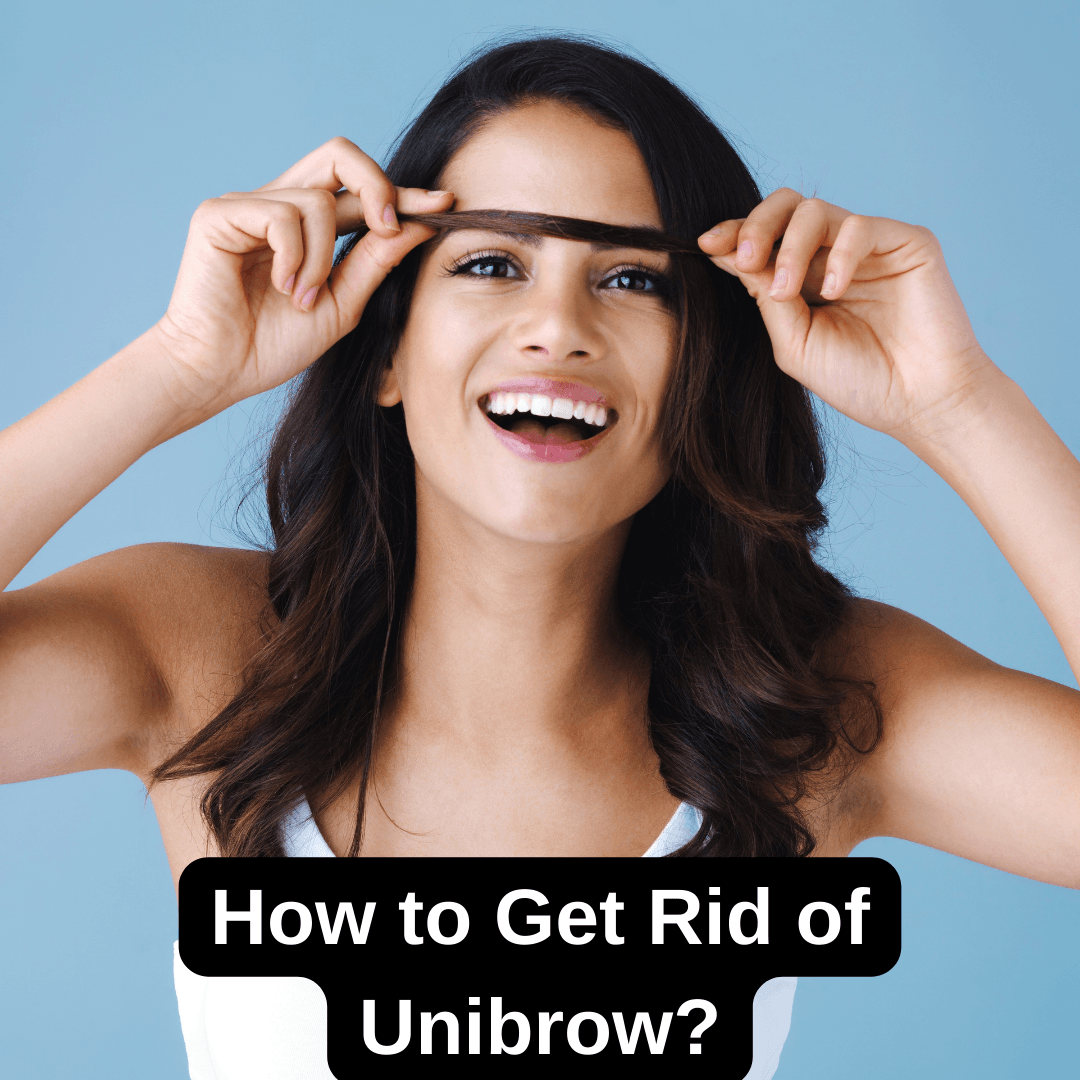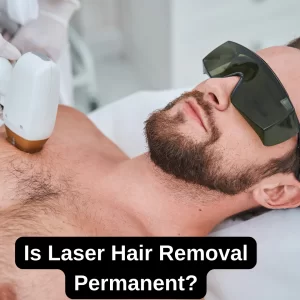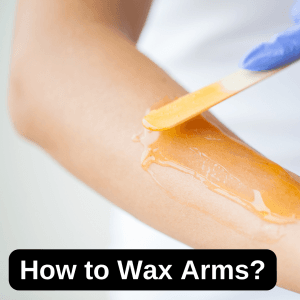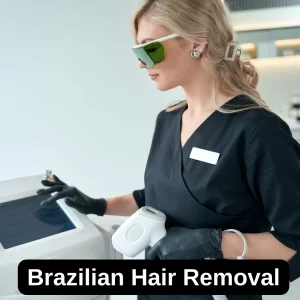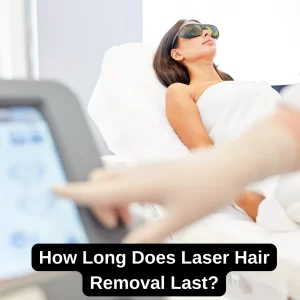A unibrow, often referred to as a monobrow, is when hair grows between the eyebrows, forming a continuous line. While it’s completely natural and even celebrated in some cultures, many people prefer a more defined brow shape for a cleaner look. If you’re looking to refine your brow area, whether you want a quick fix or a long-lasting solution, there are several effective methods to choose from. In this guide, we’ll explore both temporary and permanent options, helping you find the best approach to achieve the look you’re after.
Quick Comparison of Unibrow Removal Methods
| Method | Duration of Results | Pain Level | Cost | Suitability |
| Tweezing | 3-4 weeks | Moderate | Low | Precise, at-home solution |
| Waxing | 4-6 weeks | High | Medium | Quick, professional or DIY |
| Shaving | 1-2 days | Low | Very Low | Temporary, painless |
| Laser Hair Removal | Permanent (after sessions) | Moderate | High | Long-term, cost-effective |
| Electrolysis | Permanent | High | Very High | Best for small areas |
What Causes a Unibrow?
Understanding what causes a unibrow can be helpful when considering the best removal methods. Genetics play a major role—if your family members have thick eyebrow hair, you might be more prone to developing a unibrow. Hormonal fluctuations can also impact hair growth, especially conditions like polycystic ovary syndrome (PCOS), which can lead to excess facial hair. Research published in The Journal of Dermatological Science reveals that elevated androgen levels can trigger increased facial hair growth, including in the unibrow area. By making adjustments to your diet and lifestyle to help balance hormones, it may be possible to reduce hair growth over time (source: Journal of Dermatological Science, 2017).
Did you know that hormonal imbalances can also lead to eyebrow thinning? Learn more in our article on why eyebrows fall out.
Temporary Solutions for Unibrow Removal
If you’re looking for quick and convenient ways to get rid of a unibrow at home, there are several effective methods that don’t require a trip to a salon. These options are not only budget-friendly but also allow you to maintain your brows in the comfort of your own home. From simple tools to natural remedies, these methods can help you achieve a well-defined brow area with minimal effort.
1. Tweezing: Precise and Cost-Effective
Tweezing remains a popular and precise method for unibrow removal that’s both affordable and effective. To begin, make sure to clean your tweezers with alcohol to reduce the risk of infections. Gently hold the skin taut and pluck hairs in the direction of growth, which can help reduce discomfort. Applying a soothing gel like aloe vera afterward can minimize any redness or irritation. While this method offers long-lasting results for up to 4 weeks, it can be somewhat painful and requires patience due to its time-consuming nature.
2. Waxing: Longer-Lasting Results
Waxing is an effective way to remove multiple hairs in one go, delivering longer-lasting results than shaving or tweezing. To get the best results, it’s essential to use pre-made facial waxing strips and start with clean, dry skin. After waxing, applying a soothing agent like aloe vera or witch hazel can help reduce redness and calm the skin. This method can keep the unibrow area smooth for up to six weeks, but it may be quite painful, especially for individuals with sensitive skin. If you’re considering waxing other areas, check out our step-by-step guide on how to wax arms for smooth, flawless skin.
3. Shaving: Quick and Painless
Shaving is the fastest and least painful way to temporarily get rid of a unibrow, making it ideal for those seeking a quick fix. However, it demands frequent maintenance since hair generally starts growing back within one to two days. For safe shaving, use a facial razor specifically designed for delicate areas and pair it with a shaving gel to reduce the likelihood of cuts and irritation. Thinking of switching to waxing but worried about side effects? Learn whether waxing can cause ingrown hairs and how to prevent them.
Permanent Solutions for Unibrow Removal
If managing unibrow hair has become a chore and you’re seeking a more enduring solution, professional treatments can offer long-term or even permanent results. These options are perfect for those who want a low-maintenance and hassle-free way to keep the unibrow area smooth. Let’s take a closer look at two of the most effective permanent solutions: laser hair removal and electrolysis.
Laser Hair Removal: Long-Term Solution for Unibrow Hair
Laser hair removal is a highly effective option for those seeking a long-term reduction in unibrow hair. The treatment involves the use of a laser device that emits concentrated light pulses. These pulses are absorbed by the pigment (melanin) within the hair, converting the light into heat that damages hair follicles and inhibits future growth. Because hair grows in cycles, multiple sessions—generally between 4 to 8—are required for optimal results.
The benefits of laser hair removal are significant, as many individuals experience a noticeable reduction in hair growth after completing the recommended series of sessions. The procedure is precise, efficiently targeting dark, coarse hairs while leaving the surrounding skin unaffected. For small areas like the unibrow, sessions are relatively quick, often lasting only a few minutes.
However, there are some downsides to consider. The cost for a full course of laser treatments can range between $200 to $500, which may be a substantial investment. Multiple treatments are necessary because the laser only affects follicles in their active growth phase. Additionally, some temporary side effects, such as redness, swelling, or skin sensitivity, may occur post-treatment. To ensure the best results, it’s essential to consult a certified laser specialist and avoid sun exposure before and after each session.
This method is most effective for individuals with dark hair and fair skin, as the laser targets pigment in the hair shaft. Unfortunately, laser hair removal is less effective for those with blonde, gray, or red hair, as these hair types have less melanin for the laser to target. Not sure how laser hair removal works? Check out our in-depth article on https://www.epilationworld.com/laser-hair-removal-how-does-it-work/ for a complete breakdown.
Interested in alternative hair removal technologies? Read our https://www.epilationworld.com/intense-pulsed-light-laser-guide/ to compare your options.
Electrolysis: The Only FDA-Approved Permanent Hair Removal Method
Electrolysis is widely regarded as the most reliable method for those seeking permanent hair removal. It works by using a fine needle to deliver a small electrical current directly into each hair follicle, effectively destroying it at the root. Unlike laser hair removal, which mainly reduces hair growth, electrolysis is designed to completely eliminate hair in the treated area. The process involves inserting a thin needle into each follicle, followed by applying an electric current to damage the root. The hair is then carefully removed with tweezers.
Because hair can grow densely in areas like the unibrow, multiple sessions are usually needed to treat all follicles completely. Electrolysis is the only FDA-approved method for permanent hair removal, making it a reliable choice for those seeking lasting results. It’s effective on all hair colors and skin types, which is particularly advantageous for achieving precision in small areas like the unibrow. Wondering how many sessions electrolysis takes for permanent results? Read our detailed guide on electrolysis treatment duration.
However, electrolysis does have some drawbacks. The procedure can be uncomfortable, often feeling like a stinging sensation, and it’s time-consuming since each follicle must be treated individually. This, combined with the need for multiple sessions, can make it a costly option, with prices typically ranging from $50 to $150 per session. To minimize discomfort, applying a numbing cream before your appointment can be helpful; it’s worth discussing this option with your technician. Electrolysis is especially well-suited for individuals with lighter hair colors, such as blonde, gray, or red, that may not respond well to laser treatments. It’s also an excellent choice for those with darker skin tones who may not be ideal candidates for laser hair removal due to its focus on pigment.
Choosing the Right Permanent Hair Removal Method
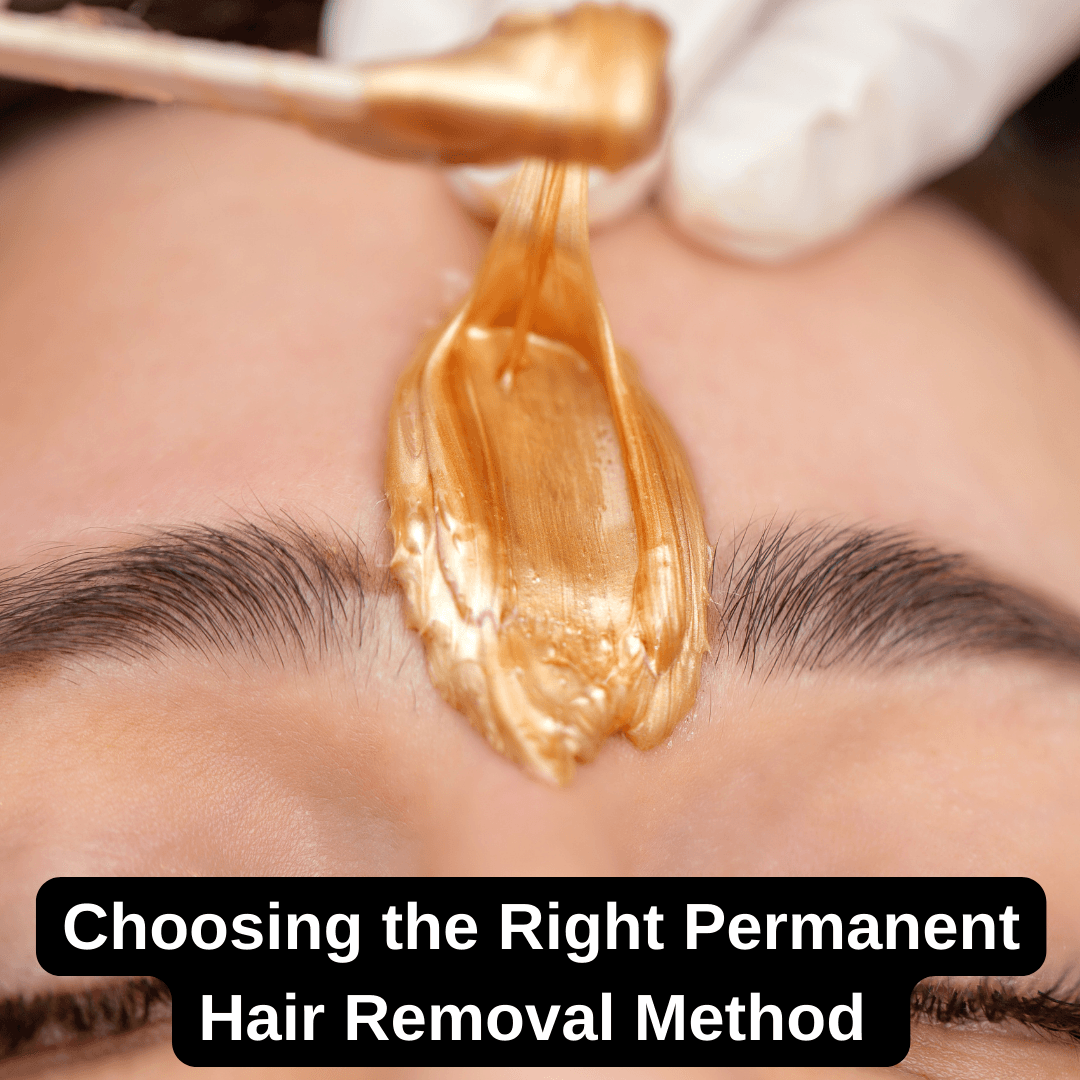
When choosing between laser hair removal and electrolysis, it’s important to consider factors like your hair type, skin tone, budget, and pain tolerance. Below is a quick comparison to guide your decision:
| Method | Results | Pain Level | Cost | Best For |
| Laser Hair Removal | Long-term hair reduction | Moderate | High ($200-$500+) | Dark hair on light skin; quicker sessions |
| Electrolysis | Permanent hair removal | High | Very High ($50-$150 per session) | All hair colors and skin types, especially lighter hair or darker skin tones; small, precise areas |
Laser hair removal is an excellent choice for those aiming to reduce hair growth significantly over the long term while benefiting from quicker, efficient sessions. It works especially well if you have darker hair and lighter skin, as the laser targets the pigment in hair follicles. This method is perfect if you’re looking for noticeable results with fewer sessions and minimal downtime.
On the other hand, if you’re focused on achieving a truly permanent solution, electrolysis may be the best option. It is particularly effective for individuals with lighter hair colors like blonde or gray or those with darker skin tones, where laser treatments might not be as effective. While electrolysis requires more time and can cause some discomfort, it’s the only FDA-approved method for permanent hair removal. For those dedicated to completely eliminating hair in specific areas, electrolysis is definitely worth considering despite its longer, more intensive process.
Curious about laser waxing and how it compares to traditional hair removal methods? Learn more in our article on what laser waxing is.
Important Tips for Permanent Unibrow Hair Removal
To get the best results from either laser hair removal or electrolysis, it’s crucial to follow certain pre- and post-treatment guidelines. One of the most important things to keep in mind is to avoid sun exposure, as sunburnt skin can increase the risk of side effects like hyperpigmentation. Keeping your skin well-hydrated is also essential, as moisturized skin tends to heal more quickly and responds better to the treatments. After your session, it’s important to follow the aftercare instructions provided by your specialist. This often includes using gentle cleansers and avoiding exfoliants for at least 48 hours to prevent irritation. Additionally, always ensure that your treatments are performed by certified professionals. This reduces the likelihood of complications such as burns, scars, or other adverse reactions. By selecting the right method for your needs and taking proper care of your skin before and after each session, you can enjoy a smooth, hair-free brow area with minimal hassle.
Natural Home Remedies for Reducing Unibrow Hair Growth
For those seeking natural, chemical-free approaches to managing unibrow hair growth, there are several effective remedies you can try at home. These options not only help reduce hair growth gradually but also nourish the skin, leaving it smooth and healthy. By incorporating these methods into your routine, you can achieve a more refined look without resorting to harsh treatments. Let’s explore some of the best natural remedies that you can easily prepare with ingredients you likely already have at home. Looking for a DIY wax recipe without citrus? Try our sugar wax recipe without lemon for an all-natural alternative.
1. Sugar and Lemon Scrub: Natural Exfoliation and Hair Lightening
A traditional yet effective remedy involves using a combination of sugar and lemon juice to exfoliate the skin while also lightening hair. The granular texture of sugar helps remove dead skin cells, promoting smoother skin, while the natural bleaching properties of lemon juice work to make hair appear lighter and less noticeable over time.
To prepare this remedy, simply mix two tablespoons of sugar with one tablespoon of freshly squeezed lemon juice until it forms a slightly coarse paste. Apply the mixture directly to the unibrow area using either your fingers or a soft cloth. Massage gently in circular motions for a few minutes to allow the sugar to exfoliate and the lemon to penetrate the hair follicles. Leave the mixture on for about ten minutes before rinsing with lukewarm water. For best results, repeat this process twice a week.
Consistent use can gradually reduce the visibility of hair, while also exfoliating the skin and leaving it feeling smooth. This natural method is a gentle yet effective way to manage unwanted hair growth without resorting to harsh chemicals, providing benefits that extend beyond simple hair removal.
2. Turmeric and Milk Paste: Slowing Hair Regrowth Naturally
Turmeric, celebrated for its powerful anti-inflammatory and antibacterial properties, is widely used in skincare for its soothing effects. When mixed with milk, this golden spice can help slow hair regrowth while nourishing the skin. The active compound in turmeric, curcumin, is known to weaken hair follicles, potentially reducing hair growth over time. Meanwhile, milk serves as a natural moisturizer, keeping the skin hydrated and preventing dryness or irritation.
To prepare this simple yet effective remedy, mix one tablespoon of turmeric powder with just enough milk (about one to two teaspoons) to form a thick, smooth paste. Using either a brush or your fingertips, apply this mixture to the unibrow area. Allow it to sit for around 15 to 20 minutes, giving it time to dry fully. Once it’s set, gently rub off the dried paste using a damp cloth or rinse thoroughly with cool water. For best results, incorporate this treatment into your routine two to three times a week.
Regular use of this paste can gradually reduce hair growth, while also providing relief to irritated skin, especially after hair removal methods like tweezing or waxing. The treatment not only slows down regrowth but also leaves the skin feeling soft and refreshed. Note that turmeric may leave a temporary yellow tint on the skin; this can easily be removed using a mild cleanser or a mixture of milk applied with cotton pads.
3. Papaya Paste for Hair Reduction: Enzyme Power for Hair Inhibition
Papaya, a natural wonder packed with the enzyme papain, is particularly effective in slowing down hair regrowth. This enzyme works by breaking down hair follicles, thereby inhibiting new growth. What makes papaya an excellent choice for hair reduction is its gentle nature, making it especially suitable for sensitive skin types. When combined with turmeric, which has anti-inflammatory properties, the mixture not only reduces hair but also soothes the skin.
To prepare this nourishing paste, blend about a quarter cup of fresh papaya pulp until smooth and mix it with one teaspoon of turmeric powder. Apply the mixture evenly to the unibrow area, making sure to cover all the hair. For better absorption, massage the area gently for a couple of minutes. Allow the paste to sit for around 20 to 25 minutes before rinsing it off with lukewarm water. For best results, incorporate this treatment into your skincare routine twice a week.
This natural remedy is highly effective in gradually reducing hair regrowth with consistent use, all while being gentle enough to avoid irritating sensitive skin. Additionally, it leaves the skin soft, smooth, and even brighter. For added hydration, consider mixing in a few drops of olive oil to the papaya paste, enhancing its skin-nourishing benefits.
Why These Natural Remedies Work
The natural remedies discussed not only target unwanted hair growth but also enhance the health of your skin. These solutions are entirely free from harsh chemicals, making them perfect for anyone looking for a gentle, skin-friendly approach. Ingredients like turmeric, sugar, and papaya have been proven to offer long-lasting results when used consistently.
It’s important to remember that natural methods take time to produce visible outcomes, so patience and regular application are essential. Before trying any new remedy, always conduct a patch test to rule out any potential allergic reactions. For optimal results, consider integrating these natural treatments with your regular hair removal methods, such as tweezing or waxing. By adopting these techniques into your skincare routine, you can effectively reduce unibrow hair while ensuring your skin remains smooth, healthy, and glowing.
How to Prevent Unibrow Regrowth: Tips for Long-Lasting Results
After successfully removing your unibrow, the next step is to maintain the smooth, hair-free appearance for as long as possible. While removing the hair provides instant results, preventing regrowth requires ongoing care and a bit of diligence. By incorporating certain habits into your routine, you can enjoy longer-lasting results, whether you used tweezing, waxing, or more permanent solutions like laser hair removal.
Firstly, regular exfoliation is essential. It not only keeps your skin smooth but also helps prevent ingrown hairs, which can occur when hair starts to grow back. Use a gentle exfoliator designed for facial skin two to three times a week. This will help remove dead skin cells and encourage healthy hair growth patterns.
In addition to exfoliation, keeping the area hydrated is crucial. Applying a lightweight, non-comedogenic moisturizer ensures that your skin remains soft and less prone to irritation. Well-moisturized skin also helps reduce the appearance of new hair growth, making regrowth less noticeable.
For those interested in prolonging the effects of hair removal, consider using hair growth inhibitors. These products work by weakening hair follicles over time, leading to slower regrowth. Applying such products after hair removal can extend the smooth period between sessions.
Lastly, if you’ve opted for laser hair removal or electrolysis, always follow your specialist’s aftercare instructions carefully. Avoid sun exposure, as UV rays can irritate treated skin and even reverse the effects of hair removal treatments. By staying consistent with these practices, you can maintain your desired look and minimize the need for frequent hair removal.
Wondering how long your results will last? Our guide on how long laser hair removal lasts has all the details you need. Curious about hair growth rates? Find out how much hair grows in a month and how it affects your hair removal routine.
1. Exfoliate Regularly to Prevent Ingrown Hairs
Ingrown hairs are a common concern that many people encounter after removing hair from areas like the unibrow. These occur when hair curls back into the skin rather than growing outward, leading to redness, irritation, and sometimes small, uncomfortable bumps. To prevent this issue, exfoliation can be incredibly beneficial. By gently exfoliating the skin, you can clear away dead skin cells that might otherwise block hair follicles and cause ingrown hairs to form.
Additionally, exfoliation enhances blood circulation in the brow area, promoting healthier skin and helping hair to grow out of the follicle smoothly rather than getting trapped beneath the surface. To exfoliate safely, it’s best to use a gentle scrub designed specifically for facial skin. Natural options, like a mix of sugar or oatmeal with a bit of honey, can be highly effective without causing irritation. It’s recommended to exfoliate the unibrow area about two to three times per week; however, be careful not to overdo it, as too much exfoliation can actually irritate the skin.
For an extra boost, consider using a soft facial brush or an exfoliating sponge to gently buff away dead skin cells. Following up with a hydrating moisturizer afterward will help keep the skin soft and supple, reducing the likelihood of irritation and promoting a smoother, hair-free appearance.
2. Moisturize to Keep the Skin Hydrated and Soothe Irritation
After hair removal from the unibrow area, the skin can often become sensitive and more susceptible to dryness. To keep the skin smooth and prevent any potential irritation, regular moisturizing is essential. By maintaining proper hydration, you can help avoid dryness that might otherwise lead to irritation or even make regrowing hair appear coarser.
Moisturizing has several benefits, especially after hair removal. It helps reduce redness and irritation, soothing the skin that might have been stressed by techniques like waxing or tweezing. Keeping the skin well-moisturized also prevents dry patches from forming. When the skin becomes overly dry, it can sometimes stimulate hair growth as the body attempts to repair itself.
For the delicate brow area, non-comedogenic oils like jojoba oil, aloe vera gel, or argan oil are excellent options because they are lightweight, absorb quickly, and won’t clog pores. Hydrating serums containing hyaluronic acid are also beneficial, as they provide deep moisture without leaving a greasy residue.
For optimal results, it’s best to apply your chosen moisturizer immediately after hair removal or exfoliation to lock in moisture. Gently massaging the product into the skin using circular motions can further improve absorption and even help stimulate the hair follicles, keeping the skin in the best possible condition.
3. Use Hair Growth Inhibitors for Long-Term Control
If you’re looking to slow down the regrowth of unibrow hair, adding hair growth inhibitors to your skincare routine can be quite effective. These products are designed with active ingredients that gradually reduce the rate at which hair grows back by weakening the follicles over time, making it easier to maintain a hair-free appearance.
The way hair growth inhibitors work is by targeting follicle activity. They often contain natural extracts like soy, papaya enzymes, and other plant-based compounds known for their ability to reduce follicle function. By using these inhibitors consistently, you can extend the smooth, hair-free period between your usual hair removal sessions.
There are various products available, such as serums and creams formulated to be safe for facial use. For those who prefer a natural approach, using a homemade papaya paste can be an excellent alternative, as its enzymes can help gradually weaken hair follicles.
To maximize the effectiveness of hair growth inhibitors, apply them directly to the unibrow area after removing hair. For optimal results, incorporate them into your nightly skincare routine. Consistency is crucial, so keep in mind that it might take several weeks to see noticeable changes in hair regrowth.
4. Consider Long-Term Hair Removal Options
If you’re looking for a way to stop the cycle of frequent unibrow maintenance, it may be worth considering permanent solutions like laser hair removal or electrolysis. These methods can provide lasting results, making them ideal for those who want a more permanent fix.
Laser hair removal uses targeted laser light to focus on hair follicles, reducing hair growth significantly after multiple sessions. It’s effective for long-term reduction but may still require occasional touch-ups to maintain smooth results. On the other hand, electrolysis involves using electric currents to completely destroy hair follicles, preventing regrowth altogether. This method is perfect if you’re aiming for a permanent solution, especially for areas with dense hair growth.
When opting for either method, it’s essential to follow the recommended aftercare to avoid irritation and ensure effective healing. Keep in mind that even with laser treatments, maintenance sessions might be necessary to sustain optimal results over time.
Frequently Asked Questions
Is a unibrow a disorder?
No, a unibrow is not a disorder. It’s simply a natural variation in hair growth. Genetics play a significant role in whether someone develops a unibrow. It’s completely normal and not indicative of any health issue.
Does genetics affect unibrow growth?
Absolutely. If your family members have thicker eyebrow hair, you’re more likely to develop a unibrow. Hormonal factors can also influence hair growth in the brow area.
Can unibrows go away on their own?
No, unibrows don’t typically go away on their own since they are caused by genetics and hair growth patterns. However, hair may become less noticeable with age or hormonal changes.
Should I pluck my unibrow at 13?
It’s generally safe to pluck a unibrow at the age of 13, but it’s important to proceed with caution. At this age, skin can be more sensitive. Clean your tweezers with alcohol and pluck hairs gently in the direction of growth to avoid irritation.
Does plucking a unibrow hurt?
Yes, plucking can cause discomfort, especially if you’re new to it. To reduce pain, try using a warm compress on the area before plucking to open up hair follicles and make the process easier.
How do I get rid of a unibrow without pain?
Shaving and hair removal creams are painless, temporary solutions for removing a unibrow. However, these methods require frequent maintenance.
Can unibrow hair grow back thicker after removal?
No, this is a common myth. Hair does not grow back thicker after plucking, shaving, or waxing. It may appear thicker initially due to the blunt ends created by cutting or shaving.
Is laser hair removal safe for the unibrow area?
Yes, laser hair removal is safe when performed by a certified professional. It’s a great option for those seeking a more permanent solution to unibrow hair.
How long does it take for natural remedies to work?
Natural remedies like turmeric or sugar scrubs may take several weeks to show noticeable results. Consistency is key when using these treatments.
Are unibrows unattractive?
Beauty is subjective. In some cultures, unibrows are seen as unique and attractive. For example, in countries like Tajikistan, unibrows are celebrated as a sign of beauty, strength, and good fortune.
What country likes unibrows?
In countries like Tajikistan, unibrows are admired and considered a symbol of beauty. Some people even use makeup to enhance the appearance of their unibrows.
Who is the famous girl with a unibrow?
Frida Kahlo, the iconic Mexican artist, is perhaps the most famous woman known for her unibrow. She embraced her natural look and often highlighted her unibrow in her self-portraits, becoming an icon of self-expression and confidence.
Can I wax my baby’s unibrow?
No, it is not recommended to wax or pluck a baby’s unibrow. Babies have extremely sensitive skin, and using hair removal products can cause irritation or even damage their skin. It’s best to wait until they are older if hair removal becomes necessary.
Is waxing your face safe? Get the facts in our expert guide on whether it’s bad to wax your face.
Unibrows are a natural and distinctive feature, celebrated in various cultures for their uniqueness. Whether you decide to keep your unibrow as it is or opt for removal, the most important factor is choosing what makes you feel most comfortable and confident. There are numerous options available, from simple at-home techniques like tweezing and shaving to more permanent solutions like laser treatments or natural remedies, ensuring there’s a suitable method for everyone’s needs and preferences.
It’s crucial to remember that beauty ideals are subjective and vary widely across different cultures. In some regions, a unibrow is seen as a symbol of beauty, strength, and even good luck. Embracing what makes you different can truly set you apart.
If you’re exploring hair removal methods, take your time and be patient to find what works best for your skin type and comfort level. And for those considering permanent options, always consult a certified professional to ensure both safety and optimal results. Ultimately, the right choice is the one that aligns with your personal style and sense of self-expression, allowing you to feel confident in your appearance.
Confidence is truly the foundation of beauty—regardless of whether you choose to keep your unibrow or shape it to your liking. It’s about feeling comfortable in your own skin and embracing what makes you unique. Whether your brows are thick, thin, connected, or separated, the most important thing is that you feel good about yourself. So, focus on what makes you feel confident, because that’s where true beauty shines through.
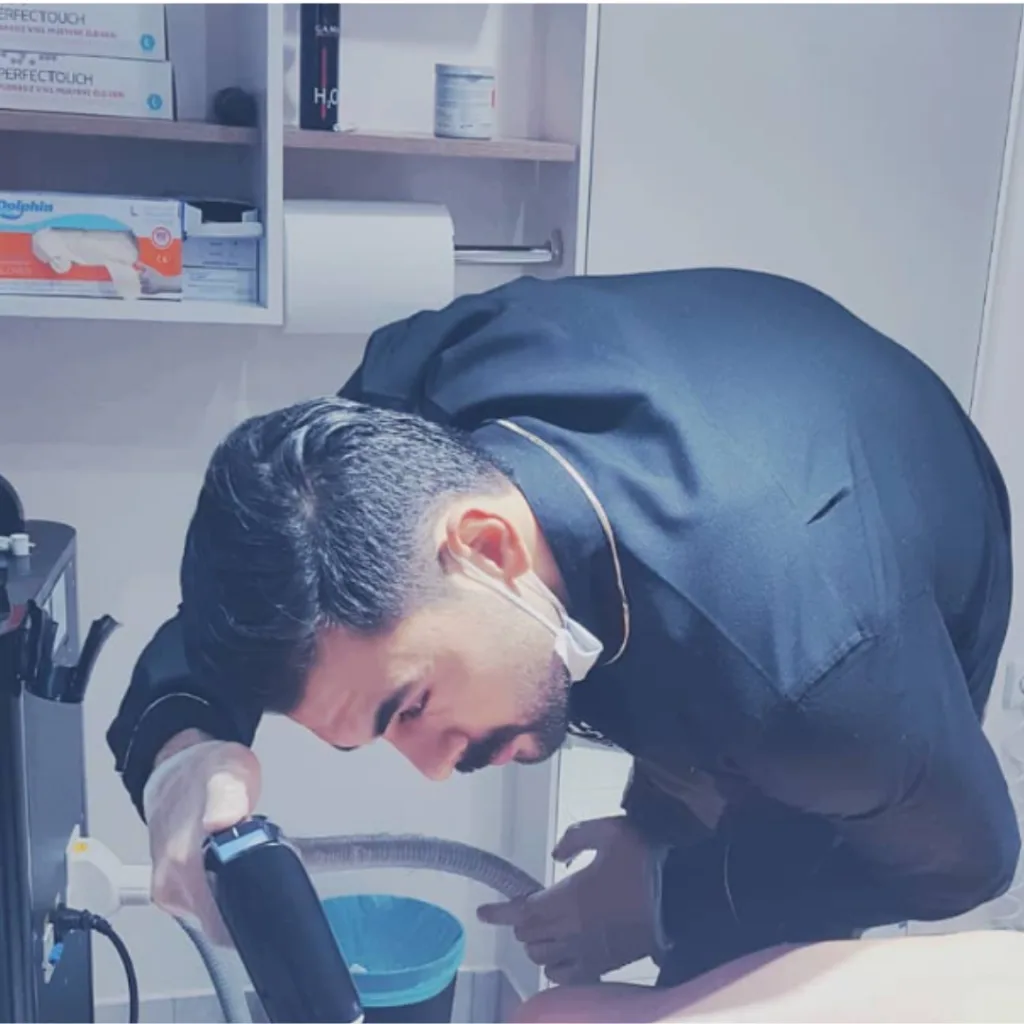
Male Laser Hair Removal Specialist & Certified Laser Practitioner
With over 8 years of professional experience and 30,000+ hours of laser application, He is a certified specialist in male laser hair removal and men’s skincare. His expertise covers diode laser systems and tailored personal care solutions for men. Trusted by thousands of clients, his work reflects technical mastery and a deep understanding of male aesthetics, backed by hands-on clinical experience.

